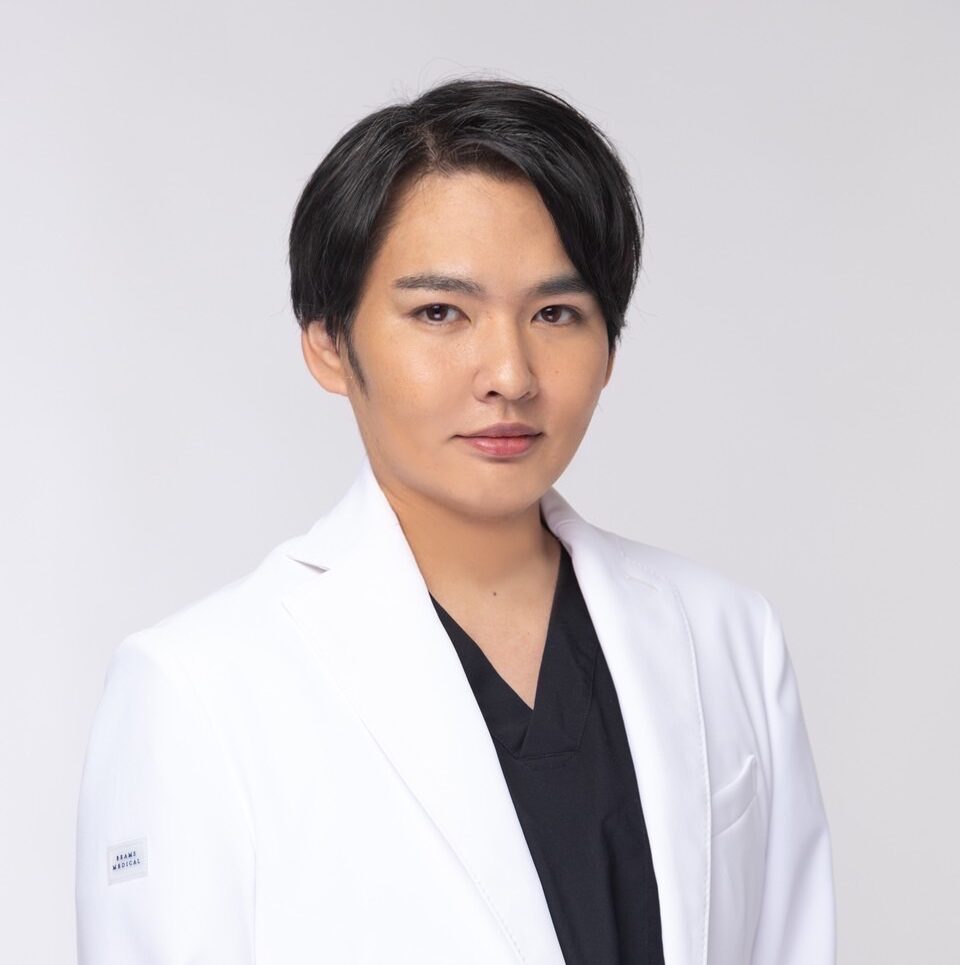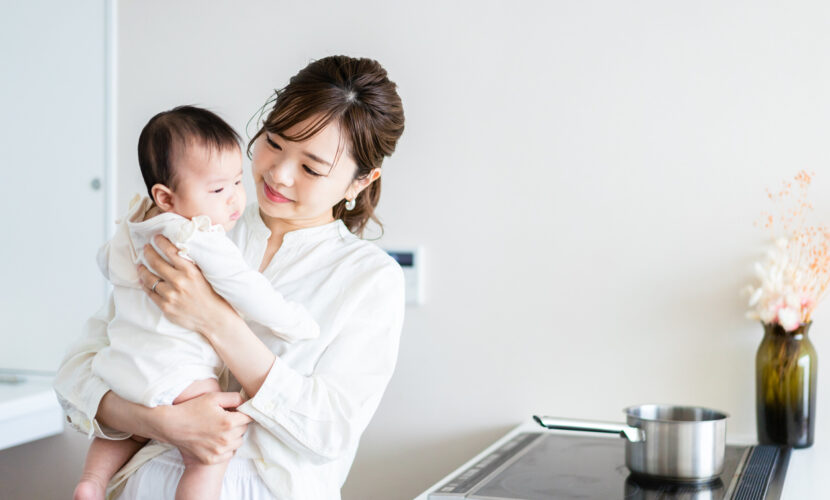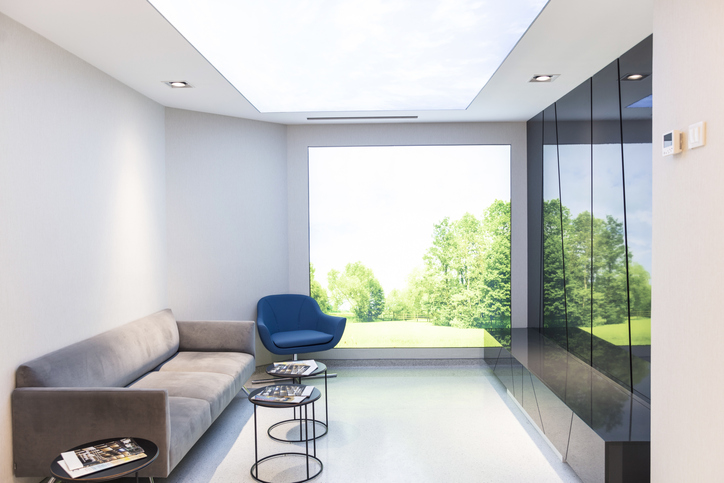You are probably a little tired of your new life with your baby, and at the same time, you are probably feeling a little tired from the fast-paced life that you have never experienced before. When you look at yourself in the mirror, you sigh at the spots that seem to be darker than before your pregnancy. I want to do something about this spot right now, but can I have it removed while I'm breastfeeding? Will the laser treatment affect my baby?" I am sure that many of you have such sincere questions and concerns.
Before I go any further, let me conclude that many clinics do not recommend laser spot removal while breastfeeding. However, this by no means means means that mothers should give up beauty. There is a clear medical reason for this, which is to prioritize the safety of your precious baby above all else.
Here, we will carefully explain, one by one, the path to resolving all questions and turning anxiety into peace of mind, from the reasons why treatment is not recommended while breastfeeding, to safe and optimal blemish control measures that can be started now, to preparing for glowing future skin.

Graduated from the Faculty of Medicine, National Kumamoto University. After serving as the director of major beauty clinics in Japan, etc., he opened Aladdin Aesthetic Clinic in 2023. He is a professional in aesthetic medicine with a doctorate in anti-aging research and many years of experience. With the motto of "Toward the realization of cosmetic medicine without lies," he aims to be the "Only One" together with his patients.
- Medical opinion is "not recommended as a general rule" for spot removal laser during lactation.
- What are those spots in the first place? Types of spots that become more common after childbirth
- Why? Three medical reasons why spot removal during lactation is not recommended
- Rationale 1|The risk of darkening of spots" is very high due to hormonal imbalance.
- Rationale 2|Postpartum delicate skin conditions can easily lead to unexpected skin problems.
- Rationale 3|The safety of the drugs used for babies cannot be assured as "100%".
- Why do different clinics have different views?
- Don't give up while breastfeeding! The best solution to prevent blemishes, starting today!
- For the Post-Breastfeeding Future! Full-Scale Blemish Treatment You Need to Know About Now!
- Frequently Asked Questions (Q&A) about spots during breastfeeding
- summary
Medical opinion is "not recommended as a general rule" for spot removal laser during lactation.
Every time I look in the mirror, I see a dark spot that has become darker after childbirth. On the one hand, you want to get rid of these spots as soon as possible, but on the other hand, you are probably thinking, "But is it really safe to have laser treatment while I am breastfeeding? But is it really safe to have laser treatment while breastfeeding?
Currently, many beauty clinics have a policy of "not recommending in principle" laser or light (IPL) spot removal treatment during the breastfeeding period, and this is probably true everywhere. Please understand that this is a unified view based on clear medical evidence, which will be explained in detail in what follows, and with the safety of your precious baby as the top priority.
When I tell you this, you may be disappointed and think, "I knew it was a bad idea...". But please do not misunderstand me. This does not mean at all that "mothers should hold back from being beautiful. Rather, we would like to wholeheartedly support your desire to "be beautiful" as you struggle to raise your child.
So why is it not recommended? It is to ensure safety for the baby, as close to 100% as possible. During the lactation period, a woman's body is undergoing major hormonal balance changes and her skin is in a very delicate and unpredictable state. The strong external stimulation of the laser during such a special period of time may involve specific risks that are different from those that occur during normal times.
One thing you should know is that there have been no reports of serious health problems for mothers and children caused by spot removal lasers during breastfeeding in the past. It is just a "precautionary safety measure," so to speak, to eliminate "just in case" possibilities and avoid all risks.
What are those spots in the first place? Types of spots that become more common after childbirth
In the previous chapter, we told you that we "as a rule do not recommend" spot removal laser treatment while breastfeeding. One of the main reasons for this is hidden in the "true nature" of the spots. In a word, there are actually various types of "blemishes," each with a different cause and nature. Different causes naturally require different effective approaches.
Especially during the postpartum and lactation periods, women's skin is prone to blemishes that appear due to unique causes. Let's take a closer look at two typical types of spots that many mothers suffer from: chloasma and senile pigmentation. Please read on while looking in the mirror to see which type your own spots are closer to. Knowing what the enemy is is the shortest route to precise care.
Chloasma, which is strongly influenced by hormones
There are hazy light brown shadows spreading symmetrically around the cheekbones.... The outlines of each one are indistinct and look as if they are smeared with pale paint. If a blemish fits these characteristics, it may be "melasma.
The most important feature of melasma is that the balance of female hormones is deeply involved in its development. In the body that has gone through pregnancy, childbirth, and is now continuing to breastfeed, female hormones such as progesterone and estrogen fluctuate greatly. These hormonal fluctuations overstimulate and activate melanocytes, the cells that produce melanin, the cause of blemishes. This is the main mechanism by which spots become darker during pregnancy and melasma appears in places where it did not exist before.
And this is a very important point: melasma is very delicate and easily reacts to inappropriately strong stimulation. Even laser treatments that are effective for general melasma can stimulate melanocytes and cause melasma to become darker than it was before the treatment if the model is chosen or the output setting is incorrect. This risk is particularly high during the period of breastfeeding, when the hormonal balance is unstable, so careful judgment is required.
Senile pigmentation" due to accumulation of ultraviolet rays
The other is senile pigmentation, the most commonly known of the so-called "spots. In contrast to the melasma mentioned earlier, each of these spots is a round brownish spot with a relatively clear outline, and they vary in size. Although the name "senile" may seem a little surprising, the main cause is the accumulation of ultraviolet rays that the skin has been exposed to.
When the skin is exposed to ultraviolet rays, it produces melanin to protect itself. When the skin is young, the melanin produced is smoothly expelled through skin turnover (metabolism). However, when UV damage accumulates over many years, melanin production becomes excessive, turnover is disrupted, and discharge is delayed, causing melanin to sit on the skin and become established as a blemish.
Do you find yourself forgetting to apply your own sunscreen or not having time to reapply it when you are busy taking care of your baby? When you are raising a child, you tend to have more opportunities to be exposed to UV rays unprotected, such as when you go to the park with your child or hang the laundry out to dry.
As a result, it is not uncommon for previously latent spots to surface or for the original spots to darken in color. This senile pigmentation is inherently a good indication for laser treatment, but since other risks must be considered during the lactation period, the timing of starting treatment should still be carefully considered.
Why? Three medical reasons why spot removal during lactation is not recommended
In the previous chapter, we reported that postpartum skin is prone to the appearance of "melasma" and other skin conditions that are strongly influenced by hormones. Thus, why is aggressive spot removal treatment such as laser not recommended during the lactation period, when the skin is even just in a special condition?
There are three major clear medical reasons behind this. These three perspectives are (1) the unforeseen risks that can occur with one's own skin, (2) the downtime issues unique to the postpartum body, and most importantly, (3) the effects on the baby. Knowing each of these one by one, we are sure you will gain a deeper understanding of why we are so cautious.
Rationale 1|The risk of darkening of spots" is very high due to hormonal imbalance.
The first and most important reason is that the special hormonal balance of the lactation period is likely to have a direct negative impact on laser treatment results. According to dermatological findings, a woman's body during pregnancy and lactation continues to be strongly influenced by female hormones such as estrogen (follicular hormone) and progesterone (progestin hormone). These hormones have the ability to activate melanocytes, the factories that produce melanin, the cause of blemishes.
In a manner of speaking, melanocytes in lactating skin are in a very sensitive and hyper-sensitive state where the gas pedal is always easily stepped on. What would happen if a spot-removing laser is used at this time to stimulate the skin with intense heat energy? The laser, which is supposed to target only the cause of the blemish, may overstimulate the entire hypersensitive melanocytes, causing them to produce large amounts of melanin as a defensive reaction.
This is a phenomenon called "post-inflammatory hyperpigmentation (PIH)" that occurs after treatment. The treatment was supposed to lighten the pigmentation, but instead, the pigmentation becomes more extensive and darker. The risk of this sad result is much higher than under normal circumstances.
Rationale 2|Postpartum delicate skin conditions can easily lead to unexpected skin problems.
Next is the issue of your own skin condition. You are unable to get a good night's sleep due to night feedings and night crying. Taking care of your baby is your top priority, and your own diet and skin care tends to take a backseat. Postpartum life takes a heavy toll on both body and mind. Such lack of sleep, stress, and nutritional imbalances can significantly reduce the health of the skin and weaken the "barrier function" that protects the skin from external stimuli.
Skin with a reduced barrier function is, so to speak, unprotected and unarmored. Laser irradiation tends to cause stronger and longer-lasting downtime symptoms such as redness, burning, and dryness after treatment. In addition, even lotions and creams that are normally used without any problems can often become irritating, or cause unexpected skin irritation or rash. During a time when you have little time to spare both mentally and physically, prolonged downtime and skin problems can cause further stress and hinder recovery, which is a vicious cycle that cannot be denied.
Rationale 3|The safety of the drugs used for babies cannot be assured as "100%".
And one of the most serious concerns of our medical professionals is the safety for babies of the medications used in conjunction with the treatment. In spot removal laser treatment, anesthetic creams (topical medications) may be prescribed to relieve pain, as well as oral and topical medications to enhance the effectiveness of the treatment.
Take, for example, the ingredient lidocaine, which is found in anesthetic creams. According to information from the National Center for Child Health and Development and many other professional organizations, if used topically, the amount transferred to breast milk is extremely small and has little effect on the baby. However, that is not synonymous with "100% safe.
Even if it is a one-in-a-million or one-in-a-billion possibility, it cannot be assured that there is zero risk. In addition, oral medications such as tranexamic acid, which is prescribed for melasma treatment, are classified as "prudent administration," meaning that administration is considered only when the physician determines that "the benefits of the treatment outweigh the possible risks.
It is the ethical judgment of many clinics that it is not appropriate to take this slight risk in the necessarily non-emergency realm of cosmetic medicine.
Why do different clinics have different views?
After reading this far, some of you may be confused and think, "But I looked on the Internet and found a clinic that says 'breastfeeding is OK'....
This difference in opinion does not mean that either clinic is wrong. This is due to differences in the type of laser equipment used, the power settings, and above all, the treatment policies and philosophies of the doctors and clinics as to where they place their "safety margins.
Some clinics have a policy of accepting the slightest risk and accommodating the patient's wish to be treated as soon as possible, while others, like us, thoroughly eliminate all possible risks and recommend waiting until the timing is safe and close to 100%. Choosing a clinic with a policy that fits your values is the first step toward a regret-free treatment.
Don't give up while breastfeeding! The best solution to prevent blemishes, starting today!
After learning why spot removal laser is not recommended while breastfeeding, you may have felt a little depressed, thinking, "After all, I have to put up with the spots until I breastfeed..." But please do not give up. The breastfeeding period is not a time to give up on beauty.
Rather, it is a very important "period of protection and nurturing" to gently care for the skin, which is delicate due to hormonal balance and lifestyle changes, and to maximize the effectiveness of future full-scale treatments. Even if laser is not an option, there are actually many best options that can be made now. Here are some smart moves you can start making today for your future self.
Most important! Thorough UV protection" to protect future skin as well.
If you were to ask us, "What is the single most important thing you can do to prevent blemishes while breastfeeding?" we would answer without hesitation, "Thorough UV protection.
This is because preventing UV rays is the "best defense" against further darkening of existing spots and the "strongest prevention" against the formation of new spots. Especially at this time of year, when melanocytes are activated by hormones, the slightest carelessness can trigger new spots.
Even if you say, "I am careful when I go outside, but...," we encourage you to make it a habit to "stay indoors all day long. UVA waves, a type of ultraviolet rays, can pass through window glass and reach deep into the skin. Even if you spend a lot of time indoors when taking care of your baby, be sure to incorporate sunscreen at the end of your skincare routine every morning.
Aim for SPF30/PA++ or higher, and choose hypoallergenic products that are safe to touch babies and can be removed with soap. If you are too busy to reapply, it is also wise to utilize "drinkable sunscreen (such as Neutroxsun®)" as a supplement.
From defense to offense. Whitening skincare" that is safe even while breastfeeding
Once you have solidified your "defense" of UV protection, the next step is to adopt an "offensive" stance in skincare. There are many whitening active ingredients that can be used safely while breastfeeding.
First of all, we recommend the active use of "vitamin C derivatives," which can be expected to suppress melanin production and reduce melanin that has already formed. Cosmetics containing tranexamic acid, which suppresses melanocyte activation, and placenta extract, which supports skin metabolism, are also recommended.
On the other hand, the high effectiveness of "hydroquinone," known for its high whitening effect, and "retinol (vitamin A)," which promotes skin turnover, may cause irritation to the skin. Please be sure to consult your doctor before using these products, especially with your current delicate skin condition.
And, "moisturizing" should always be considered as a set with whitening care. The skin must be filled with moisture and the barrier function must be maintained normally. This is the foundation for maximizing the effects of whitening ingredients. Keep in mind that whitening and moisturizing are the two wheels of the car that support beautiful skin.
Self-judgment is not an option! How to deal wisely with "supplements and over-the-counter drugs
Many people consider taking care of blemishes from the inside out. Some over-the-counter supplements and medicines are considered relatively safe to take while breastfeeding.
Typical examples are vitamin C (ascorbic acid), which is an antioxidant, and L-cysteine, which inhibits melanin production and promotes its elimination. These are found in many products and may be effective in supporting skin care.
However, caution should be exercised with oral medications containing tranexamic acid (e.g., Transino®), which are marketed as drugs for melasma improvement. Some of them contain the same ingredients as those for medical use, and taking them on one's own judgment is not recommended in consideration of transfer to breast milk, etc.
Even with vitamins, overdose can affect the body. Always consult your obstetrician/gynecologist, pharmacist, or a doctor at a cosmetic clinic such as ours before starting to take any product, rather than simply starting because it is "easy."
Don't Worry Alone. How to use the clinic wisely
It is never the case that "there is no point in going to the clinic while breastfeeding." Rather, it is a great opportunity to receive expert advice. Even if laser treatment is not available, we can diagnose your current skin condition correctly and suggest the best home care.
For example, clinics can provide high-quality "vitamins" (such as Cynar) and moisturizers (such as Hydroid) that improve the skin's barrier function as prescription drugs. These may be covered by health insurance and may be more effective and economical than over-the-counter products to continue care.
Some clinics may also have menus that can be performed while breastfeeding, such as "ion induction," which delivers beauty ingredients deep into the skin with very little irritation, and very mild "peels. Above all, consulting with a specialist will relieve any worries you may have had alone and allow you to tackle skincare with a positive attitude.
| Countermeasures | Safety and Recommendation | Specific actions and points |
|---|---|---|
| Thorough UV protection | ◎ (Most important) | Apply sunscreen (SPF30/PA++ or higher) daily, even indoors. When it is difficult to reapply, drink sunscreen as a supplement. I recommend a type that is hypoallergenic and can be removed with soap. |
| Skin care with whitening active ingredients | ○ (recommended) | Ingredients to be actively used: Vitamin C derivative, tranexamic acid, placenta extract Ingredients to consult a physician before use: hydroquinone, retinol It is important to achieve both "whitening" and "moisturizing. |
| Oral medications (over-the-counter and supplements) | △ (negotiable) | Vitamin C and L-cysteine: considered relatively safe Tranexamic acid: Do not take over-the-counter drugs (such as Transino) on your own judgment, but consult your doctor or pharmacist first. |
| Prescription drugs and procedures at the clinic | △ (partially acceptable) | Prescription drugs: vitamins (such as Cynaral) and moisturizers are often prescribable Treatment: Ion induction and some peels with less irritation may be possible. First, consult with us at a counseling session. |
For the Post-Breastfeeding Future! Full-Scale Blemish Treatment You Need to Know About Now!
The UV protection and skin care that you have been steadily continuing during the breastfeeding period will not be in vain. These steady efforts are the best "protective care" to rebuild the foundation of weakened skin and prevent further darkening of spots. These efforts are the best preparation for the full-fledged "aggressive treatment" after breastfeeding, which will dramatically increase the effectiveness of the treatment and minimize downtime.
Yes, this period is an important "preparation and nurturing period" for future beautiful skin. Now, turn those efforts into confidence to take the next step smoothly. Let's start preparing now in the name of knowledge about the types and characteristics of typical blemish treatments you can choose after breastfeeding.
| treatment | Specialized blemishes/concerns | Approximate downtime |
|---|---|---|
| picolaser | Dark spots, light spots, melasma, freckles, ADM (acquired dermal melanocytosis) | Spot irradiation: protective tape for several days to a week Toning: Almost none |
| Light therapy (IPL) | Freckles, light spots in general, dullness, red face, open pores | Almost none (makeup can be applied immediately afterwards) Blemishes may temporarily darken. |
| chemical peeling | Dullness, acne and acne scars, blackheads in pores, blemish prevention | Almost none (makeup can be applied immediately afterwards) Dryness and redness may occur after the procedure. |
Cutting-edge treatment] Pico Laser|Multi-treatment for both spots and melasma
First, we would like to introduce the "picolaser," which has become a mainstream treatment for skin blemishes in recent years. The greatest feature of the picolaser is its ability to emit laser beams in extremely short periods of time, in the order of trillionths of a second, or "picosecond. Because the irradiation time is shorter than that of conventional lasers (nanoseconds), it can break melanin pigment, the cause of blemishes, into very small pieces with a shock wave while minimizing damage to the skin caused by heat.
This makes it highly effective in treating thin spots, which have been considered difficult to treat, and melasma, which is easily aggravated by thermal stimulation. Another major advantage of this treatment is that it is less stressful on the skin, which significantly reduces downtime such as pain, redness, and scabbing after treatment.
By using a variety of irradiation modes, such as "Picospot," which pinpoints dark spots, "Picotoning," which improves melasma and dullness of the entire face, and "Picofractional," which is effective for skin elasticity and pores, it is truly a new generation of blemish treatment that can address a variety of concerns.
Rejuvenation of the entire skin] Light therapy (IPL)|For spots, freckles, red face
For those who are concerned about not only blemishes but also dullness, redness, and freckles on the entire face, we recommend Intense Pulsed Light (IPL) treatment, IPL is a treatment that irradiates a bundle of light with a wide range of wavelengths, whereas a laser irradiates light with a single wavelength. This broad spectrum of light acts gently on multiple targets, including not only melanin, which causes blemishes, but also hemoglobin, which causes reddening of the face, and collagen, which makes the skin firm.
Therefore, while fading spots and freckles, one can expect various skin beautifying effects at once, such as overall skin tone improvement, reduction of redness, pore tightening, and improvement of fine lines and wrinkles.
There is almost no downtime after treatment, and makeup can be applied immediately afterward, making this treatment ideal for busy mothers who want to minimize the impact on their daily lives. Because it is a mild treatment, it may take several treatments before you feel the effects, but you will notice an improvement in the overall condition of your skin with each treatment.
Chemical peelings|Preventing blemishes and improving transparency
If laser and phototherapy are "aggressive" treatments that directly destroy existing blemishes, chemical peels are "foundation-building" treatments that improve skin conditions and lead to a healthy skin environment that prevents blemishes from forming. In this treatment, agents such as fruit acids (AHA) and salicylic acids (BHA) are applied to the skin to gently dissolve and remove dead skin cells and dirt from pores, thereby normalizing skin turnover (metabolism), which is often disrupted.
When turnover is regulated, melanin is less likely to accumulate on the skin, leading to the prevention of new spots. In addition, roughness and dullness on the surface of the skin are cleared away, which improves the transparency of the skin and enhances the penetration of skincare ingredients such as lotion.
Although chemical peeling by itself has a skin beautifying effect, peeling before laser or phototherapy improves the penetration of the treatment light, and a higher synergistic effect can be expected to improve blemishes. This treatment is also an ideal first step in restoring the skin's basic strength, which has declined during lactation.
Frequently Asked Questions (Q&A) about spots during breastfeeding
Up to this point, we have explained in detail, step by step, from the risks of spot removal treatment while breastfeeding, to safe self-care that can be started now, to full-scale treatment after breastfeeding. We hope that the vague fears you may have had about spots in your mind have been transformed into concrete knowledge, and that you are now feeling a little more positive.
Finally, in light of the previous contents, we have compiled a list of questions that we receive particularly frequently from you in counseling sessions and other settings. We would be happy to help you resolve any final questions you may have and help you take the first step toward the future with a clear mind.
Q. When exactly can I resume spot removal treatment?
A. We understand your desire to start treatment as soon as possible. As a clear guideline, we recommend that you start treatment "after breastfeeding, when your menstruation (period) has come 2 to 3 times smoothly and your hormone balance has stabilized.
There is a reason why treatment is not started immediately after breastfeeding. Immediately after breastfeeding, the body is in the midst of a transition period, so to speak, as it switches from "breastfeeding mode" to "normal mode. The hormonal balance in the body is still unstable and the skin condition can easily fluctuate, so the risk of dark spots and skin problems still remains.
When the menstrual cycle becomes as stable as before, it is a clear sign that the secretion of female hormones has normalized and the body is approaching its pre-birth state. The shortest route to the safest and most effective treatment is to first give your body the best care it needs to recover from the enormous work of childbirth and child rearing. Do not be in a hurry and start the treatment in perfect condition.
Q. Will spots that darken during pregnancy become darker if left untreated?
A. I understand your concern. However, please be assured that there is a pleasant side to it. The main cause of melasma, which is a dark spot that became darker during pregnancy and lactation and especially spreads hazy around the cheekbones, is due to fluctuations in hormonal balance.
However, this by no means means means that you need to do nothing. The biggest key to the fate of blemishes is "UV protection," which we have repeatedly discussed in this volume. Even after the effects of hormones have subsided, if you continue to be exposed to unprotected ultraviolet rays, the melanocytes that produce the pigment in the spots will continue to be constantly stimulated. As a result, there is a good chance that spots that were supposed to fade will stay as they are, or spots that are mainly caused by UV rays, such as senile pigmentation, will instead become darker.
Instead of "leaving it alone," "carefully take care of it and see what happens." This is the proper way to deal with postpartum spots. Thorough daily UV protection and moisturizing care will maximize the chances of fading the spots naturally and increase the effectiveness of future treatments.
summary
We hope that our detailed explanation of the risks and safe measures for blemish removal treatment during breastfeeding has answered any questions or concerns you may have had in mind. The effects of hormonal balance, the delicate skin condition after childbirth, and the possible drug risks. These are the main reasons why laser treatment during breastfeeding is not recommended.
But again, this is not a "period of giving up. Rather, this period can be viewed as an important "period of preparation and nurturing" for a more radiant future. The best thing we can do now is to prepare and protect the skin's foundation with skin care based on thorough UV protection and moisturizing. This is the best shortcut to starting full-scale treatment after breastfeeding, and is the key to maximizing the effectiveness of the treatment.
Don't keep your concerns to yourself. First, consult with a specialist about skincare methods appropriate for your current skin condition and a treatment plan for after breastfeeding. Through suggestions for care that can be safely adopted while breastfeeding, you may be able to sincerely face your current and future skin.
At Aladdin Aesthetic Clinic, based on our many years of experience in cosmetic medicine and cosmetic dermatology and the knowledge of our doctoral degree, we provide counseling that aims to be "only one", offering the best treatment for each person we meet. We offer only the necessary treatments without any unnecessary information or suggestions.
Feel free to use our official LINE account for 24-hour counseling and reservations. Please feel free to contact us for free counseling for the first time or if you have any concerns.






